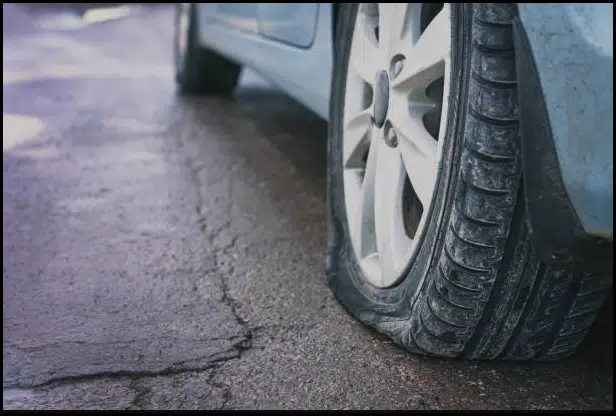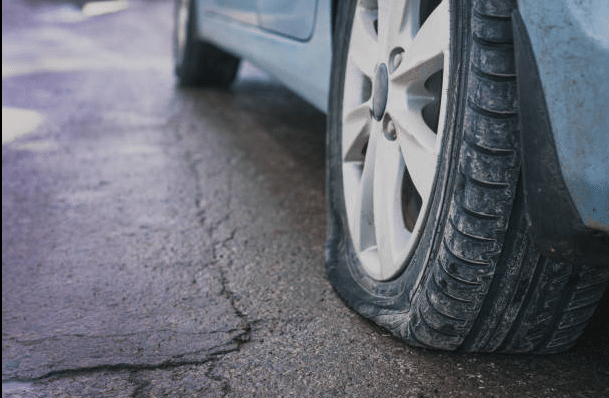
It is becoming commonly accepted wisdom among fleet operators that commercial vehicles should be fitted with low rolling resistance tires to improve fuel economy.
While it is true that low rolling resistance (LRR) tires can lower a vehicle’s fuel consumption by up to 10%, they usually cost around 50% more than standard tires of the same size.
Therefore, your decision to kit out a fleet with LRR tires should depend on how much of a priority decreasing fuel economy is and how effective you believe such tires will be at improving your fleet’s fuel economy.
This article will run through how you can roughly calculate potential savings made by the adoption of LRR tires and some of the factors that you can ascertain whether this investment is right for your fleet.
Calculating the Potential Savings Made by Switching to Low Rolling Resistance Tires.
Low rolling resistance tires improve a vehicle’s fuel economy by reducing the amount of energy lost through friction between the tire and the road.
The most recent tests (carried out in 2020) comparing LRR tires to standard tires found that LRR tires contribute to a 6.28% increase in fuel economy. Assuming that diesel costs $3.56 per gallon (according to an October 2021 estimate), this should save a fleet around $2,300 per year.
This calculation is based on several assumptions, including:
- That your vehicle is traveling at a constant speed of 70mph
- That your tires are at their optimal inflation
- That you are using state of the art LRR tires
In reality, there are many variables that affect the amount of money that you can save by using LRR tires, and that ultimately determine whether their adoption is a worthwhile one. We will run through them now.
Should Improving Your Fuel Economy be a Priority?
Although all fleet operators want to have their vehicles be as fuel-efficient as possible, budgets can only go so far, so we need to prioritize what we are going to spend money on based on where value can be most easily had.
LRR tires are not a cheap up-front investment, but the idea behind their adoption is that over time they will pay for themselves in fuel savings. Their adoption should therefore only be a priority if you think that there are major savings to be made through decreasing fuel consumption.
According to the US Energy Administration Association, fuel costs typically account for 60% of a fleet’s total operating costs. Therefore, if your fuel costs are already at around this level (say under 65% of your total operating costs), then it is likely that there are greater inefficiencies in your fleet that need addressing before you decide to upgrade your tires.
If your fuel costs are above this 65% threshold then switching to LRR tires will likely provide a healthy ROI.
How Well Do Your Drivers Look After Their Tires?
LRR tires improve fuel economy by reducing the amount of energy lost through the heat created when the tire is in contact with the road. This means that any energy savings that you might make through adopting LRR tires will be lost if the tires are not constantly kept at their optimal inflation.
A study by Continental Tires suggests that 34% of fleet vehicles are driven on underinflated tires. If these vehicles are being driven on LRR tires, then their operators are not reaping any benefit from this investment.
To ensure that your drivers are constantly keeping their tires at optimal inflation, your company should have the following tire care procedures in place:
- Proper education on tire maintenance during driver onboarding
- Mandated monthly checks of tire pressure
- Clear guidelines on how tires should be checked and maintained with enforced penalties should drivers fail to follow these.
Only once these are in place should fleet operators think about investing in LRR tires for their vehicles.
What is the Average Speed and Distance That Your Vehicles Drive?
Low rolling resistance tires offer their greatest fuel savings when they are being driven at high, constant speeds. Therefore they are most suited for long-distance fleets.
They are unsuitable (and even unsafe) if being driven on poorly paved roads, and offer next to no benefit if driven in areas with high levels of traffic where high speeds.
These factors should be monitored and considered when deciding whether to invest in LRR tires or not. As a general rule, long-distance freight fleets would likely benefit from the switch to LRR tires, whereas taxi fleets in urban areas and more specialist vehicles that may go off-road are poorer candidates for these types of tires.
How Efficient is Your Maintenance Function?
One of the drawbacks of low rolling resistance tires is that they tend to wear faster, and therefore need to be replaced more frequently, than standard tires.
These increasingly frequent replacements need to be budgeted for when deciding whether to transition to LRR tires. If you have an in-house maintenance team or have a partner that supplies 24 hour roadside maintenance, then the difference that this makes to the overall savings by changing to LRR tires should be negligible.
If however the speed of vehicle maintenance is a weakness in your fleet, and tire changes could see a vehicle be out of action for an entire day (or more), then this should at least be considered as a con of switching to LRR tires.
How Much Capital Do You Have to Pay for Low Rolling Resistance Tires?
The technology behind low rolling resistance tires has only been around since the 1980s, and since then the sophistication of the technology behind them has evolved massively. As a result there is a large difference between the quality of the more expensive and affordable LRR on the market.
If your budget only allows you to kit your fleet out with more affordable LRR tires, then this could prove to be a false economy. Often these tires are just the same as standard tires, but have a shallower depth. Although this does provide a very small improvement in fuel economy, such savings will be more than offset by their shorter lifespan.
It was only when manufacturers started introducing silica emulsifiers into LRR tire compounds did they begin to actually offer value for money. This is a relatively recent innovation, and tires with these compounds are always towards the more expensive end of the market.
Therefore it’s only worth investing in LRR tires if you can comfortably afford the more expensive tires available.
Summing Up
Although low rolling resistance tires are often thought of as “the norm” for fleet vehicles, the decision to adopt them should only be made if you are monitoring the KPIs that affect their potential ROI.
Without such knowledge, you are taking a gamble by switching to these tires considering their relative expense compared to standard tires.
This article was contributed by Mike Skoropad. Mike is the CEO of tire specialists United Tires


Comments are closed